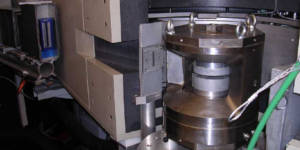Using AI to control energy for indoor agriculture
30 September 2024
Published online 30 July 2017
A highly sensitive experiment leads to the observation of a new exotic quantum magnetic phase.

© Mohamed Zayed (2016)
Now, Mohamed Zayed at the Carnegie Mellon University in Qatar, working with a large international team of researchers, have observed a novel quantum phase transition in strontium copper borate [SrCu2(BO3)2] (ref. 1). This solid is rare in that its magnetic properties can be exactly calculated — it usually exists with its ‘atomic magnets’ entangled in pairs.
“There are two inspirations for this study,” says Zayed. “We want to understand the fundamental magnetic properties of matter at a microscopic but collective level, and prepare the ground for new technologies that could transcend the current semiconductor-based circuits in our computers.”
The concept of a quantum phase transition is analogous to classical phase changes such as a solid melting to liquid. Quantum phase transitions, however, occur only at temperatures very close to absolute zero (0 K), and are triggered by changes in other physical parameters such as pressure.
With this in mind, Zayed and co-workers subjected SrCu2(BO3)2 samples to extreme pressures at temperatures between 0.5 and 2 K, while observing them using neutron spectroscopy. When the pressure was high enough, the sample moved away from the entangled-pair structure and entered a new state called a plaquette singlet, in which atoms were entangled in sets of four.
“Our future steps are to go higher in pressure when the technology becomes available, and to combine high pressures with magnetic fields,” says Zayed. “This would probably enable the discovery of yet new phases in this very special material.”
doi:10.1038/nmiddleeast.2017.118
Stay connected: